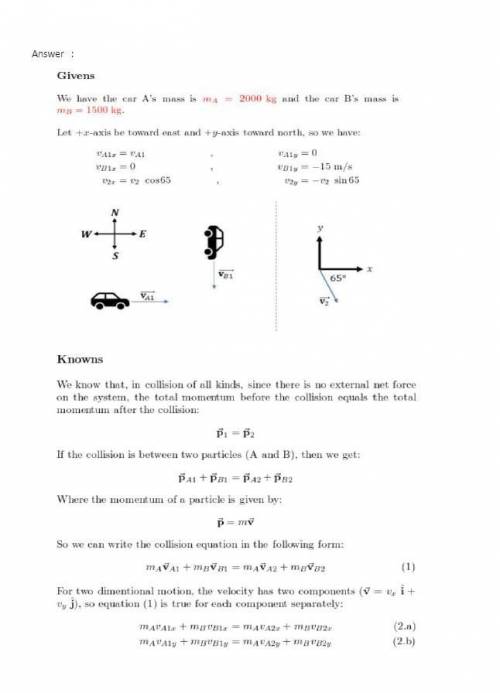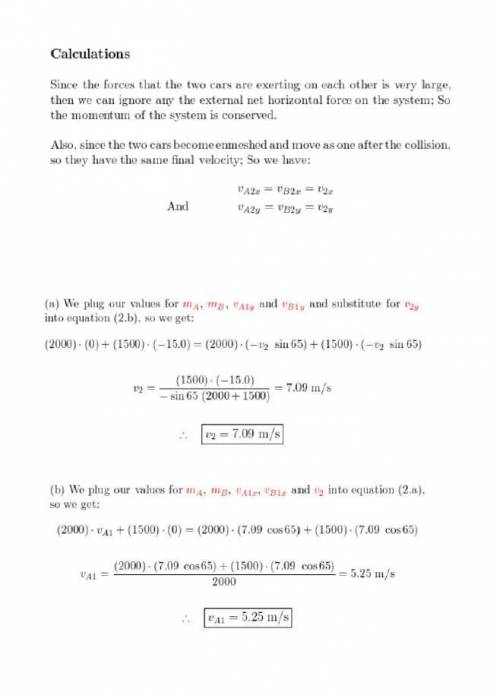
Physics, 20.03.2020 09:20, bellbradshaw16
Two cars collide at an intersection. Car A , with a mass of 2000 kg, is going from west to east, while car B, of mass 1500 kg, is going from north to south at 15 m/s. As a result, the two cars become enmeshed and move as one. As an expert witness, you inspect the scene and determine that, after the collision, the enmeshed cars moved at an angle of 65∘ south of east from the point of impact. (a) How fast were the enmeshed cars moving just after the collision? (b) How fast was car A going just before the collision?

Answers: 2
Other questions on the subject: Physics

Physics, 21.06.2019 21:30, alexandraparava
In what direction does the medium move relative to the direction of the wave? explain.
Answers: 3

Physics, 22.06.2019 02:40, esheagustafson
What happens when chlorine reacts with bromine? a. electrons move from the chlorine atoms to the bromine atoms. b. electrons move from the bromine atoms to the chlorine atoms. c. electrons are shared between the chlorine atoms and the bromine atoms. d. electrons become delocalized among the atoms.
Answers: 2


Physics, 22.06.2019 17:00, jenn8055
In the future, people will only enjoy one sport: electrodisc. in this sport, you gain points when you cause metallic discs hovering on a field to exchange charge. you are an electrodisc player playing the popular four disc variant. the disks have charges of qa = −8.0 µc, qb = −2.0 µc, qc = +5.0 µc, and qd = +12.0 µc. (1) you bring two disks together and then separate them. you measure the resulting charge of these two disks and find that it is +5.0 µc per disk. which two disks did you bring together? (a) a and b (b) a and c (c)a and d (d)b and c(e) b and d (f) c and d. (2) you bring three disks together and then separate them. you measure the resulting charge of these three disks and find that it is +3.0 µc per disk. which three disks did you bring together? a, b, and c (a) a, b, and d (c) a, c, and d (d) b, c, and d. (3) given the resulting charge of each disk measured in (b) is +3.0 µc, how many electrons would you need to add to a disk of this charge to electrically neutralize it? electrons
Answers: 3
Do you know the correct answer?
Two cars collide at an intersection. Car A , with a mass of 2000 kg, is going from west to east, whi...
Questions in other subjects:



Computers and Technology, 04.10.2021 23:40

Mathematics, 04.10.2021 23:40



Mathematics, 04.10.2021 23:40

Mathematics, 04.10.2021 23:40

Mathematics, 04.10.2021 23:40

Chemistry, 04.10.2021 23:40








